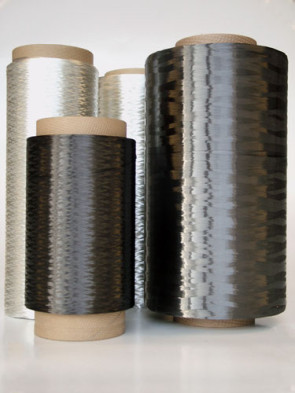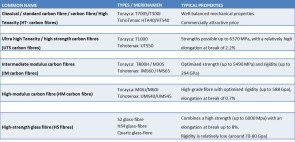Pultrusion profiles in special fibres
By varying in fibre types, it is possible to manipulate the physical and mechanical properties of our pultrusion profiles.
For example, a profile becomes electrically insulating when glass fibres are used, and conductive when carbon fibres are used. Extremely high strengths and rigidities can be obtained by using carbon fibres, which is often accompanied by a low elongation at break and therefore brittle behaviour.
When a higher elongating at break is desired, high-grade glass fibres can be the solution. High Strength (HS), S2 or quartz-glass fibres combine a higher elongation at break with a higher strength. Rigidity, on the other hand, is less than with carbon fibre.
It is therefore of major importance that the correct fibre types are applied in custom-made solutions. DPP has a sound knowledge of the behaviour of various fibres and considerable experience with varying fibre types for specific applications.
For example, DPP glass-fibre profiles are applied in an innovative development in the field of surgical guide wires. As glass-fibre micro-rods are not electrically or magnetically conductive, they can be used in combination with MRI visualisation techniques. The guide wires are extremely strong and can be bent to small radii without plastic deformation.
However, we will also always point out to you the possible disadvantages of the fibre material chosen for your application. In (model)aircraft construction, for example, High-Modulus carbon is frequently used. Spars of the wings are equipped with this HM carbon fibre, which reduces bending by a factor 2-3 and provides great advantages. An important disadvantage, however, is that the material has a low elongation at break, resulting in very brittle behaviour. It cannot cope with peak stresses very well and, moreover, the compressive strength is relatively low. This is shown in the film below.
We are happy to help you find that specific fibre that is most suitable for your application. On the left you can find a table with some special fibres that are often applied and their typical properties.
« Back


